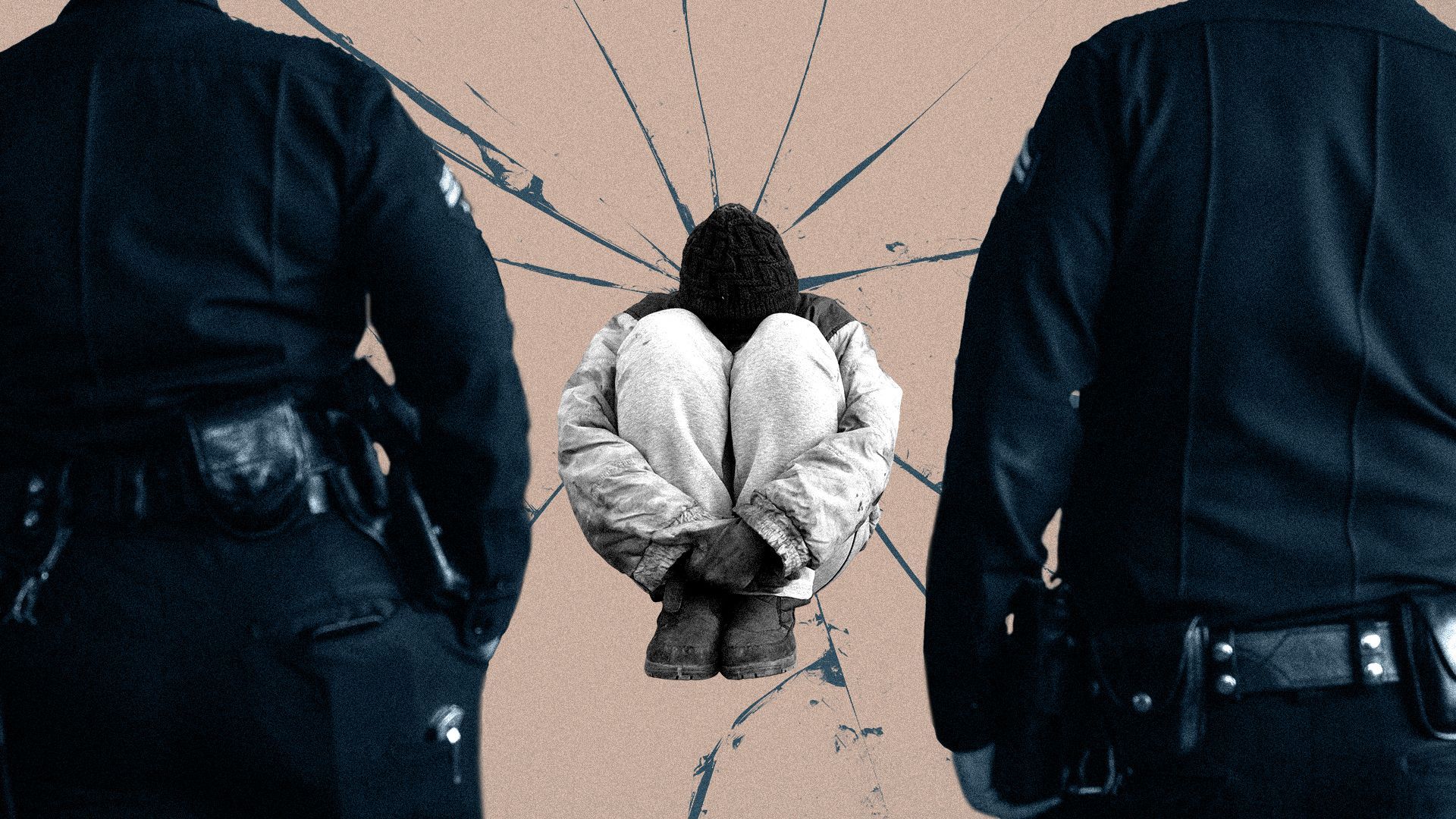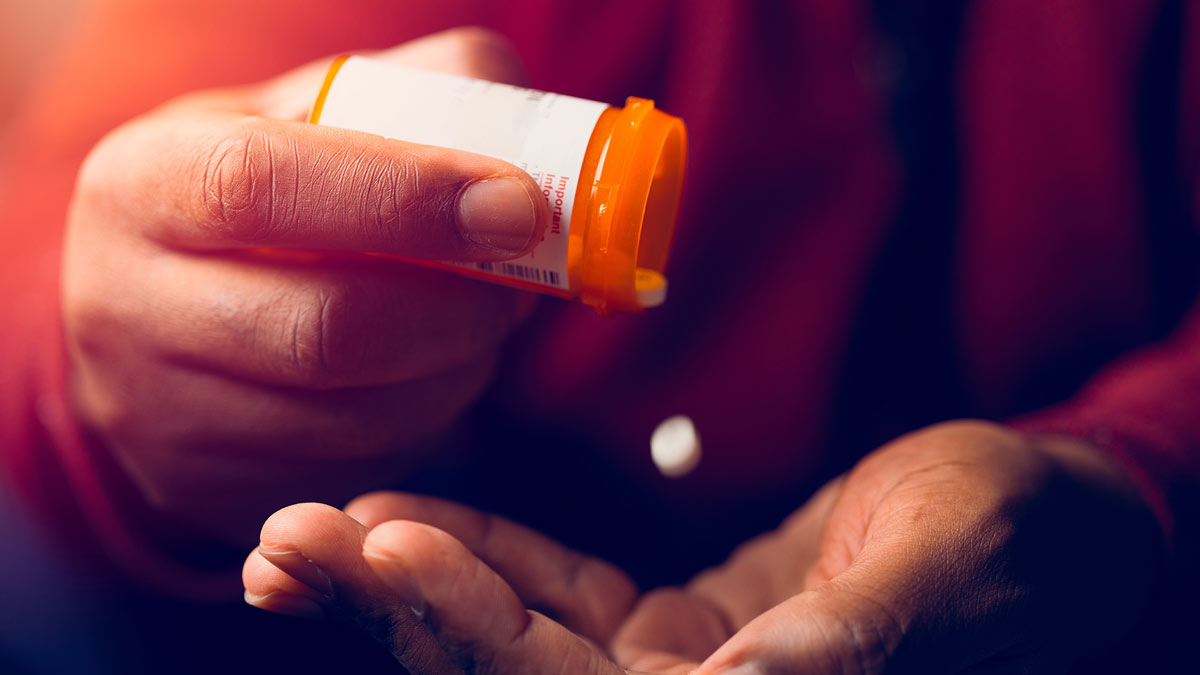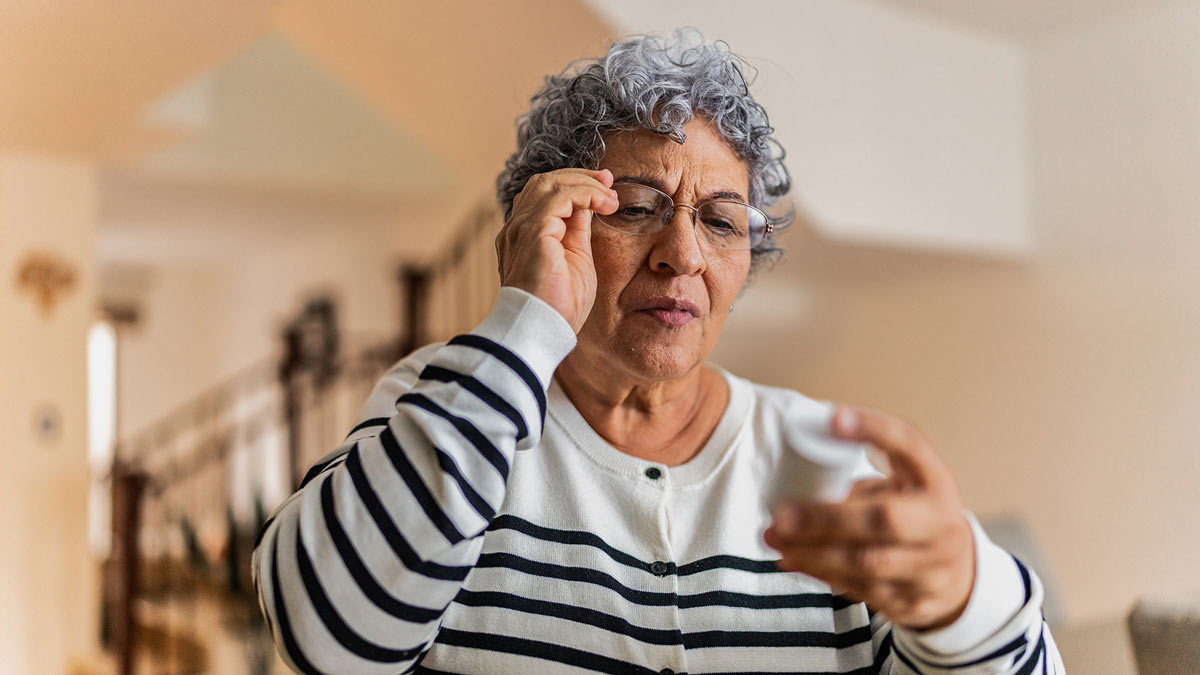| |
|
|
| |
|
Presented By PhRMA
|
| |
|
Axios Future of Health Care
|
|
By
Caitlin Owens
·
Apr 25, 2025
|
|
Good morning. Today we're looking beyond Washington, despite all the news from there — other stuff is happening! Today's word count is 1,163, or a 4.5-minute read.
|
| |
| |
|
1 big thing: Continued crackdown on mental illness
|
| |

|
|
|
Photo illustration: Lindsey Bailey/Axios. Photo: Jason Armond/Getty Images
|
| |
|
Cities and states that once championed progressive approaches to mental health and drug use are continuing their yearslong course reversal, and are increasingly open to involuntary commitment. Why it matters: The push to get people with severe mental illness help — especially those who are homeless — is a response to public backlash, but may be outpacing the availability of high-quality treatment for them. The big picture: Writing the "blue states abandon progressive drug/mental health policies" story has begun to feel repetitive to me — this has been ongoing for years. But it continues to take different iterations, and it's worth continuing to write about until someone figures out how to solve the problem. - And defining the problem can depend on who you ask. For many voters, they're looking for public places they feel are safer. But for patients with mental illness, treatment and support can be incredibly hard to access.
- It's even more complicated when the mental illness is combined with substance abuse — a situation that lands many in hospital emergency rooms, cut off from needed supports and services.
Reality check: Out-of-sight, out-of-mind isn't a solution, at least not from a health care perspective (this isn't a public safety newsletter). - And the current trends of government-mandated treatment or simply the criminalization of homelessness and mental illness are occurring at a time when the federal government is considering vastly decreasing funding streams vital to mental health treatment, especially Medicaid.
State of play: Some cities are responding to 2024 election results, in which voters elected candidates to office based on who spoke to their desire for addressing "this nexus of addiction, mental illness and homelessness," said Keith Humphreys, a professor of psychiatry at Stanford University. - Humphreys authored a recent Brookings Institution report that found policy frameworks in the Pacific Northwest region that had decreased law enforcement's role in drug policy have since seen public and policymaker support plummet, and have been rolled "back as fast as [they] had been implemented."
- San Francisco voters elected Mayor Daniel Lurie, who told the New York Times that his success depends on "if we grow our economy, if we get people off the streets and into mental health beds, if people feel safe walking down our streets again." Lurie last month unveiled his vision for addressing the city's homelessness and behavioral health crisis.
- And some changes are stemming from last year's Supreme Court decision allowing state and local governments to prohibit sleeping outdoors.
- In Silicon Valley, San Jose's Democratic mayor recently called for arresting homeless people after they resist shelter three times, the NYT recently reported. The goal is to move them into mental health treatment, but they could end up serving jail time.
Between the lines: One clear trend is the growing support for the involuntary commitment of mentally ill patients. - Oregon state lawmakers are considering changing the civil commitment standard, making it easier for judges to order people in crisis into hospital care. Gov. Tina Kotek has called for lowering that legal threshold, as well as creating hundreds of more treatment beds and better linking people in homeless shelters to mental health services.
- New York Gov. Kathy Hochul earlier this year proposed making it easier to take people having a psychiatric crisis to a hospital involuntarily and requiring better coordination after patients leave the hospital.
- Homelessness and mental illness are also becoming big issues in New York City's mayoral race.
And, of course, California has been implementing its "Care Courts," which allow civil court judges to order adults into monitored plans that can include treatment for severe mental illness, while New York City has been rolling out Mayor Eric Adams' controversial involuntary removal directive. Yes, but: The programs aren't free from criticism, despite other blue states' willingness to take similar actions. - Early data has shown that the California initiative — signed into law by Gov. Gavin Newsom in 2022 — has fallen short of its early goals, per KFF Health News.
- Adams' plan has been criticized as ineffective by a City Council report, which also raised questions about racial disparities within the program, per CBS News.
|




|
| |
| |
|
A message from PhRMA
|
|
The IRA’s pill penalty is stifling innovation
|
| |

|
| |
|
The Inflation Reduction Act’s pill penalty will have harmful consequences for patients.
Early-stage funding for the development of pills and other small molecule medicines has fallen nearly 70% since the IRA was introduced.
See why this flawed policy puts vital treatments at risk.
|
| |
| |
|
2. Ideas meet reality
|
| |
|
Some mental health advocates say the resources available for treating severe mental illness — including through involuntary commitment — simply don't match the scale of the problem, which is the result of decades of underfunding for the system. - The "catch-22 in these situations is they're trying to leverage involuntary commitment, but there's a limited number of hospital beds that are available," said Shannon Scully, a director at the National Alliance on Mental Illness. NAMI, while supportive of involuntary commitment in some cases, says it should be used as a last resort.
- And some of the available resources aren't necessarily high quality. An investigative series by the San Francisco Chronicle, for example, found that "California's sprint to expand its behavioral health system has largely benefited for-profit psychiatric hospitals," yet conditions in those facilities are "abysmal."
What they're saying: Although people have come around to the idea that getting people into treatment, even involuntarily, isn't "the worst possible thing ... I think it is a question whether that willingness would be coupled with resources for that treatment," Humphreys said. - "Voters have moved on this, but have they moved enough to say ... 'That means we have to have a really nice treatment facility,'" he added.
- Plus, there's also an element of mental health NIMBY-ism at play; many people don't want to live near a mental health facility.
Between the lines: Even without formal or intentionally designed systems, states and localities may end up paying for mental health care one way or another. - "There are no states that have adequate infrastructure, but it's a mistake to think that by not using civil commitment statutes we are somehow avoiding these very individuals being placed in beds — they are just being placed in emergency departments or boarded in the hallways to wait and deteriorate," said Lisa Dailey, executive director of the Treatment Advocacy Center.
- "The overall number of people in crisis does not go down because we wait until the intervention is in jails or emergency departments," she added.
What we're watching: The national desire to do more to address severe mental illness is now being met with the Trump administration's slashing of federal health programs, as well as potential huge cuts to federal spending on Medicaid. - The administration has cut the Substance Abuse and Mental Health Services Administration, moving it into the Administration for a Healthy America, and called for slashing even more mental health and substance abuse funding.
Medicaid cuts being considered as part of congressional Republicans' enormous tax cuts package could have an even more direct impact on states' efforts. - "Medicaid is the backbone payer for public sector mental health and addiction care," Humphreys said.
- "If, as seems likely, there are big slashing cuts to Medicaid, that would then make it harder for states and cities to do these things, because they would have to pay 100% of their costs themselves."
|




|
| |
| |
|
A message from PhRMA
|
|
The harmful consequences of the IRA’s pill penalty
|
| |

|
| |
|
Medicines that come in pill or tablet form are some of the most effective treatment options for patients.
Okay, but: When we penalize the development of pills, we risk losing some of our best weapons against disease.
See why the pill penalty must be fixed.
|
| |
|
Thanks to Nicholas Johnston, Adriel Bettelheim and Alison Snyder for editing and Matt Piper for copy editing.
|

|
Your essential communications — to staff, clients and other stakeholders — can have the same style. Axios HQ, a powerful platform, will help you do it. |
|
|
|